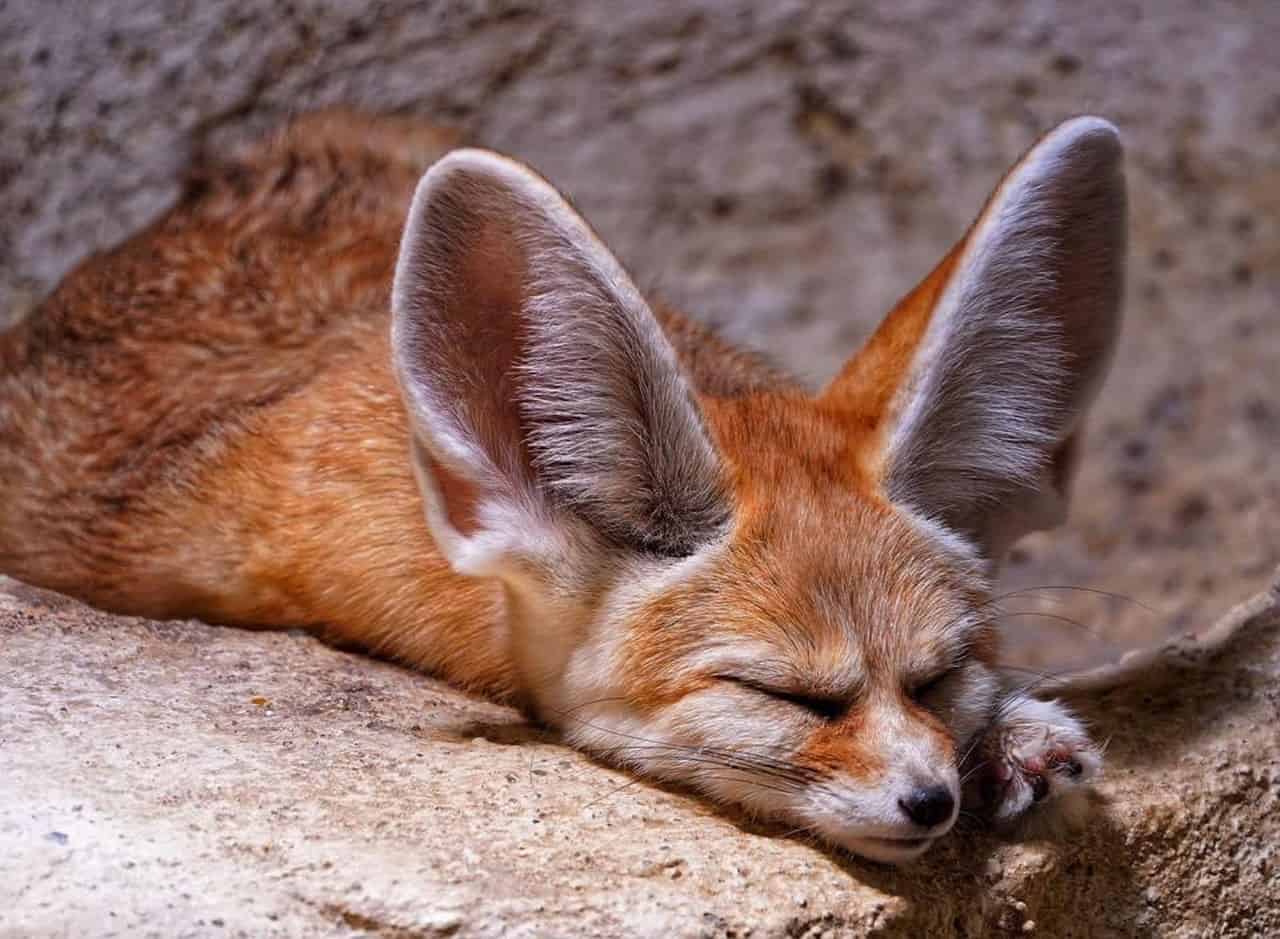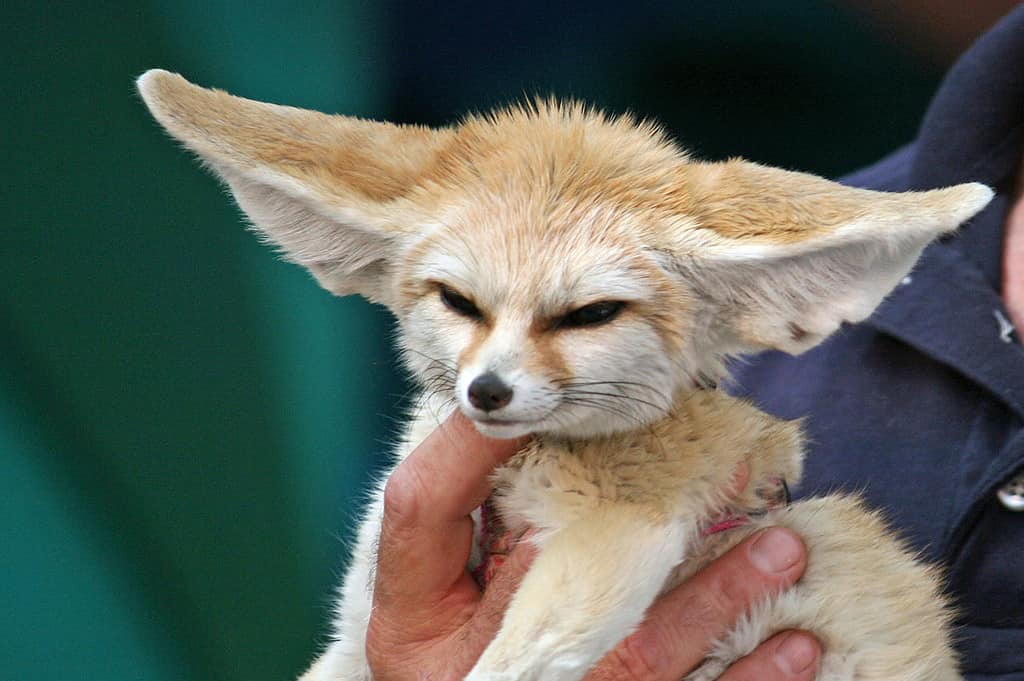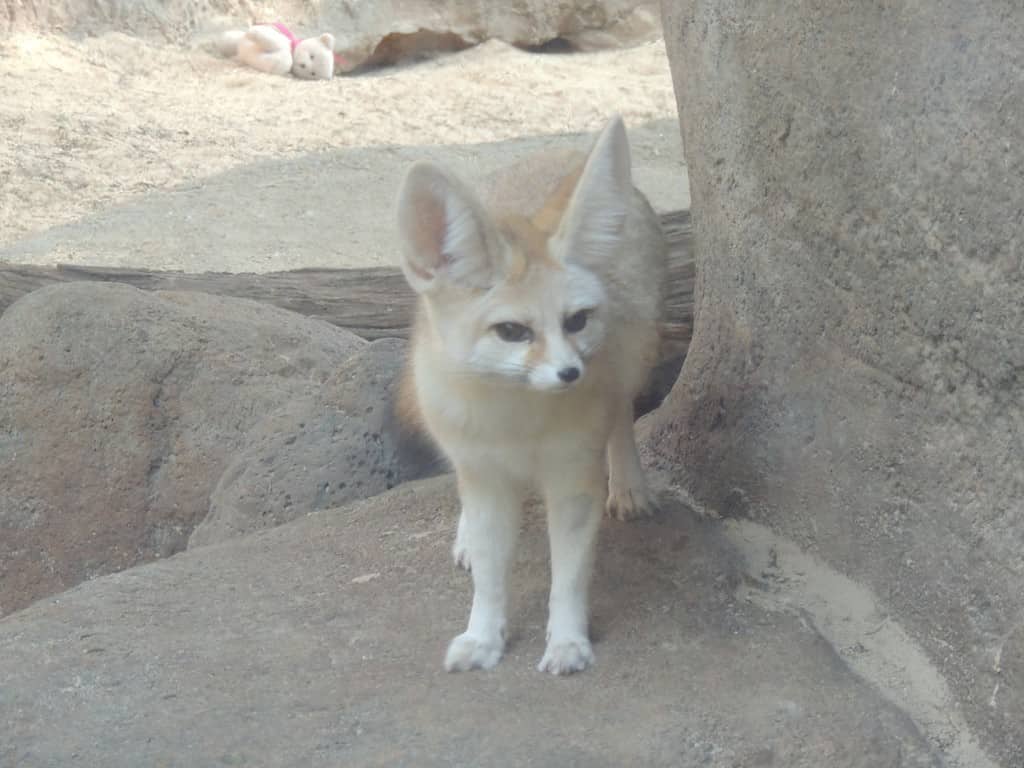Deserts are some of the most inhospitable habitats for life. Yet, amidst the vast, sandy plains of the Sahara, a small creature thrives. This is the story of the fennec fox, a remarkable animal that has adapted to life in one of the harshest environments on Earth.
The fennec fox: an overview
The fennec fox, or Vulpes zerda, is the smallest species of the Canidae family, which includes dogs, wolves, and other types of foxes. It measures only 9.5 to 16 inches in body size and weighs just 2.2 to 3.3 pounds (1 to 1.5 kilograms).
Despite its small size, this fox is easily recognizable due to its distinctive features. Its most notable characteristic is its unusually large ears, which serve a dual purpose. Not only do they help the fox detect the faintest sounds of potential prey, but they also act as natural air conditioners, dissipating heat and helping the fox stay cool in the scorching desert heat.
They are nocturnal creatures that can be very flighty and skittish. Even mild noise can put them on very high alert and get them jumpy.

The fennec fox’s feet are very hairy, and they act like snowshoes, protecting the animal from the very hot sand. The fox’s feet are also effective ‘shovels’ allowing this cute desert fox to dig frequently into the dense sand.
Its sandy color provides perfect camouflage against the desert landscape. This fur pattern also aids in reflecting heat during the day. In this respect, it is very similar to the sand cat.
Fennec fox habitat and diet: a home in the sands
The Sahara Desert, spanning across North Africa, is the fennec fox’s primary habitat. It is an opportunistic omnivore, with a diet that includes rodents, insects, birds, eggs, and even plants.
Its large ears are sensitive enough to hear prey moving underground. Along with its sharp claws, this makes the fennec fox an effective hunter in the desert environment. But they are also hunted by various larger African predators, such as eagle owls, caracals, jackals, and striped hyenas.
Despite the harsh conditions of its habitat, the fennec fox exhibits complex social behavior. They live in small communities, often consisting of a mated pair and their offspring, and communicate through a range of vocalizations, from barks to purrs.
The fennec fox as a pet: a very bad idea

Despite their adorable appearance, Fennec Foxes make poor pets. They are wild animals, adapted to a specific environment, and have needs that can be challenging to meet in a domestic setting.
Despite their dog-like appearance, Fennec Foxes typically do not enjoy being cuddled or even handled by humans. They are cautious by nature, often choosing to flee rather than fight, but they can resort to biting when scared or nervous.
If you’re considering a Fennec Fox as a pet, be prepared for the challenges of housing an active and agile creature. Unneutered males are known to mark their territory with urine, which can be a problem if you plan to let them roam freely in your home. Also, their energetic play can result in broken items, so it’s important to secure anything fragile.
Exercise is crucial for these lively animals. They need plenty of space to run and play, whether indoors or in a large outdoor enclosure. If you have a well-fenced backyard, you could allow your Fennec Fox to run freely under vigilant supervision. However, remember that they are adept diggers and climbers, capable of escaping over fences or tunneling out of your yard in a short time.
Lastly, Fennec Foxes are not quiet pets. They can produce a range of vocalizations, from high-pitched screeches when frightened or upset to cooing sounds when content. This can be disruptive, especially for those seeking a quiet pet.

But people don’t really listen. The capture and sale of fennec foxes for the illegal pet trade is one of the main factors contributing to their demise in the wild.
The fennec fox is currently listed as a species of least concern, according to the International Union for Conservation of Nature (IUCN) Red List of Threatened Species. However, this does not mean that they are free from threats. Habitat loss due to desertification and human encroachment, along with illegal capture for the exotic pet trade, pose significant challenges to the Fennec Fox population.
The fennec fox: a symbol of desert survival
The Fennec Fox, with its distinctive large ears and agile survival skills, is a symbol of life’s resilience in the face of adversity. Its survival in the harsh Sahara desert is a testament to nature’s adaptability.
As we continue to learn more about these remarkable animals, it is our responsibility to ensure their survival for future generations to admire. They need to be cherished and protected like any other wild animal. They were never meant to be your pets.



